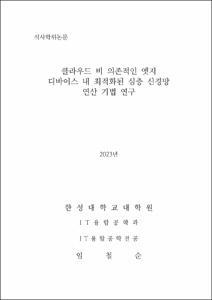클라우드 비 의존적인 엣지 디바이스 내 최적화된 심층 신경망 연산 기법 연구
= Research on Optimized Computation Technique for Deep Neural Network in Cloud-Independent Edge Devices
- Files in This Item:
-
-
Download
 200000652630.pdf
기타 데이터 / 2.92 MB / Adobe PDF
200000652630.pdf
기타 데이터 / 2.92 MB / Adobe PDF
-
Items in Repository are protected by copyright, with all rights reserved, unless otherwise indicated.